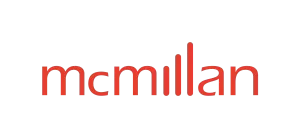- within International Law topic(s)
- in Canada
- within Transport and Insolvency/Bankruptcy/Re-Structuring topic(s)
- with Senior Company Executives, HR and Finance and Tax Executives
- in Canada
- with readers working within the Accounting & Consultancy, Banking & Credit and Business & Consumer Services industries
On July 16, 2025, Prime Minister Mark Carney unveiled a new set of steel-related trade measures (the "July Announcement"). These measures represent a significant escalation in Canada's response to ongoing disruptions in global trade. The measures both tighten existing restrictions on steel imports into Canada and signal the Government's intention to impose additional surtaxes on steel that is melted and poured in China.
These actions are expected to provide meaningful relief to Canadian steel producers facing intense global competition and market volatility, but are likely to exacerbate trade tensions with Canada's trading partners.
Updates to Steel TRQ Measures
Effective June 27, 2025, Canada implemented tariff rate quotas ("TRQs") on imports of five categories of steel products1 from countries with whom Canada does not have a free trade agreement ("FTA") (the "Steel Surtax Order").2 TRQs are measures used to restrict import volumes, whereby the government sets a volumetric quota for imports of the target goods. Above that quota, goods are subject to a substantial tariff intended to dissuade further imports.
Canada initially indicated that the total quota volume for each of the five steel TRQs applicable to non-FTA partners would correspond to the volume of 2024 imports of those products, and that above-quota imports would face a 50 percent surtax.
On July 16, 2025, the Prime Minister announced that Canada was both shrinking the quota levels for non-FTA countries and simultaneously also subjecting most FTA partner countries to the TRQs.3 Effective August 1, 2025, TRQ levels will be set at 50 percent of 2024 volumes for non-FTA countries, and FTA countries other than the United States and Mexico will likewise be subjected to TRQs. The quota for FTA countries will be set at 100 percent of 2024 volumes. FTA partner countries had previously been exempted from the application of the steel surtax.
The current text of the Steel Surtax Order provides for limited exemptions, including for goods that were in transit to Canada on the day on which the Order came into force. It is not yet known as of the date of this bulletin whether a similar exemption will be afforded to imports of steel from FTA partners that will become subject to TRQs effective August 1 pursuant to the July Announcement.
Unlike certain other TRQs that currently exist (such as those applicable to agricultural goods), Global Affairs Canada ("GAC") is administering applications for steel quota on an ongoing basis by way of first-come, first-served "shipment-specific import permits".4 For a shipment to avoid the surtax, the importer is required to present a valid permit to the CBSA when goods clear customs (i.e., at the time of final accounting).
Requests for these import permits, which grant quota if any such quota remains, can be made up to 15 days prior to the expected date of arrival of the shipment, and will remain valid for 5 days prior and 14 days after the specified arrival date. These timelines mean that steel goods will often need to be shipped from international sources before an import permit application is made, considerably heightening risk for importers who face the prospect that the quota will be exhausted by the time they apply and the goods arrive to Canada.
Quotas under the Steel Surtax Order are being administrated on a quarterly basis, likely with a view to maintaining a steady flow of imports. Any unused quarterly quota will be rolled over into the following quarter. And each TRQ sets an upper limit on the proportion of the quota than can be used by imports from any single country, reflecting historical trade patters.
Neither the Order in Council implementing the July Announcement nor an updated Customs Notice have been published as of the date of this bulletin. This results in lingering uncertainty, in that Canada could still amend or revise the new quota levels for FTA partner countries and country-specific thresholds.
GAC has indicated that it will be hold public consultations within the first two quarterly quota periods, which will provide interested parties an opportunity to provide input on the administration of the TRQ.
Forthcoming Surtax on Imports Containing Steel Melted and Poured in China
In addition to new and tightened TRQs on steel imports, Canada also announced additional 25 percent tariffs on steel imports from non-US countries that contain steel melted and poured in China. This tariff is to be implemented before the end of July. While details about this new surtax remain sparse—including whether this surtax will stack on the 50 percent surtax described above for over quota imports—the Department of Finance has announced that the products affected by the tariffs will align with the existing China Surtax Order.5
These tariffs currently apply only to steel. Although the Government had previously discussed the possibility of introducing tariffs on aluminum that was smelted and cast in China, the July Announcement did not refer to any such measures. Nevertheless, given alleged Chinese overcapacity in the aluminum sector, the regional importance of this sector to the Canadian economy, and the tariff barriers facing Canadian exports of aluminum to the United States, similar measures targeting Chinese aluminum could be forthcoming.
Canada to Require Contractors Source Canadian Steel
Finally, Canada has also announced that it intends to require that companies contracting with Government source steel from Canadian companies, subject to certain exceptions. A press release from the Department of Finance indicates that exemptions will be granted where Canadian steel producers do not manufacture the steel products in question or where relying on Canadian-made steel would raise costs to "unsustainable levels" or otherwise delay critical equipment needed for defence or national security.6
Although the parameters of this measure remain uncertain, namely as regards the eligibility criteria for Canadian steel, this announcement illustrates that Canada is pursuing cross-cutting measures in support of key sectors of the Canadian economy and is throwing the weight of the government contracting decisions behind Canada's steel producers. The measure is sure to attract considerable attention among Canada's trading partners.
The McMillan international trade team is the largest such team in the country and is available to assist companies with all international trade issues, including but not limited to trade compliance and tariff matters.
Footnotes
1. Flat products, long products, pipe and tube products, semi-finished products, and stainless steel products. A full list of the HS Codes subject to the TRQs is available online.
2. Order Imposing a Surtax on the Importation of Certain Steel Goods, SOR/2025-148. See Order in Council 2025-0534, online. See also, Canada Border Services Agency, "Customs Notice 25-24: Order Imposing a Surtax on Importation of Certain Steel Goods" (June 27, 2025), online.
3. Prime Minister's Office, "Prime Minister Carney announces new measures to protect and strengthen Canada's steel industry" (July 16, 2025), online.
4. CBSA, "Notice to Importers: Item 82 – Steel goods – Serial No. 1139" (June 27, 2025) online. Applications made by a licensed customs broker are made through GAC's NEICS online portal, whereas application made without a broker must be sent to the NEICS Help Desk email mailbox. Details regarding the form of an application for an import permit are available here and details on the cost of applications is available here.
5. Department of Finance, "Support for the Canadian Steel Sector" (July 16, 2025) online. China Surtax Order (2024), SOR/2024-187.
6. Department of Finance, "Support for the Canadian Steel Sector" (July 16, 2025) online.
The foregoing provides only an overview and does not constitute legal advice. Readers are cautioned against making any decisions based on this material alone. Rather, specific legal advice should be obtained.
© McMillan LLP 2025












